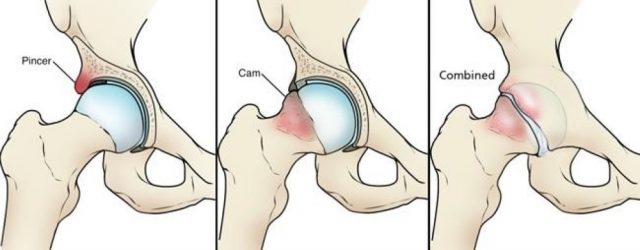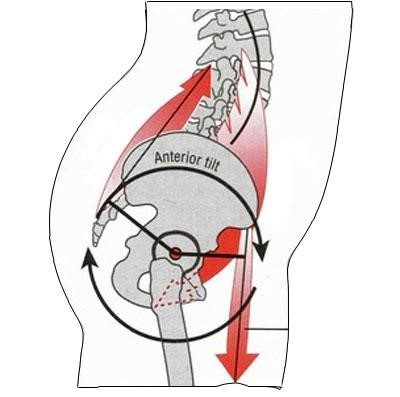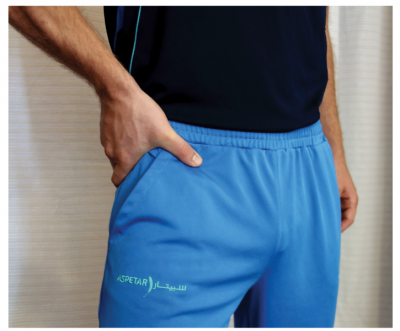Chances are, that pain is probably not from a pulled hip flexor. Hip impingement, also known as femoroacetabular impingement syndrome (or FAI), is
Chances are, that pain is probably not from a pulled hip flexor.
Hip impingement, also known as femoroacetabular impingement syndrome (or FAI), is a relatively new concept in the orthopedic and rehabilitation realm. Hip impingement occurs when the head/neck of the femur (thigh bone) contacts the rim of the socket. The area of impingement can become inflamed, irritated, and painful. This impingement condition can occur due to abnormal anatomy at the ball-and-socket hip joint, as shown in the images below. Two common types of bone formations that contribute to impingement include the Pincer and Cam lesions. One or a combination of both conditions may predispose an individual to experiencing symptoms from hip impingement.

Hip impingement can also occur biomechanically, such as when the pelvis is tipped too far anteriorly. This situation may occur as a result of insufficient abdominal and gluteal strength, or due to muscle imbalance from shortened hip flexor muscles. The image to the right shows the pelvis rotated anteriorly as a result of muscle imbalance and poor core control.

The typical presentation of hip impingement is anterior hip (or groin) pain in increasing degrees of hip flexion, such as during a deep squat or a high kick. It is typically experienced as a sharp pinching sensation localized to the anterior hip, with aching afterwards. Occasionally, a click or “snap” can be associated with hip impingement. Most people locate the pain by placing their hand on their hip and describing the pain as being between their thumb and fingers.
 Why is hip impingement important to avoid? Repetitive impingement in the hip joint can lead to cartilage degeneration, labral tears, and development of early hip arthritis. If the condition persists, secondary effects such as muscle inhibition, weakness, and altered mechanics through the lower extremity can lead to dysfunction at the knee as well.
Why is hip impingement important to avoid? Repetitive impingement in the hip joint can lead to cartilage degeneration, labral tears, and development of early hip arthritis. If the condition persists, secondary effects such as muscle inhibition, weakness, and altered mechanics through the lower extremity can lead to dysfunction at the knee as well.
Modification of certain activities or correcting exercise technique can often minimize the symptoms of hip impingement. A common mechanism of hip impingement pain is a deep squat or lunge, which brings the hip into angles of flexion greater than 90 degrees. A simple modification of decreasing the depth of the squat can often result in a reduction of pain.
Poor biomechanics are typically associated with early hip impingement conditions. Rehab should focus on improving gluteal and abdominal strength, hip control, and flexibility. In sporting activities such as soccer, improving landing and cutting mechanics can also improve hip control.

If cartilage damage is too severe, or if body abnormalities exist, surgery may be necessary to eliminate the symptoms of hip impingement. Extensive rehab would follow surgery; and muscle imbalance, posture, and movement patterns should be addressed to prevent the painful condition from returning.
